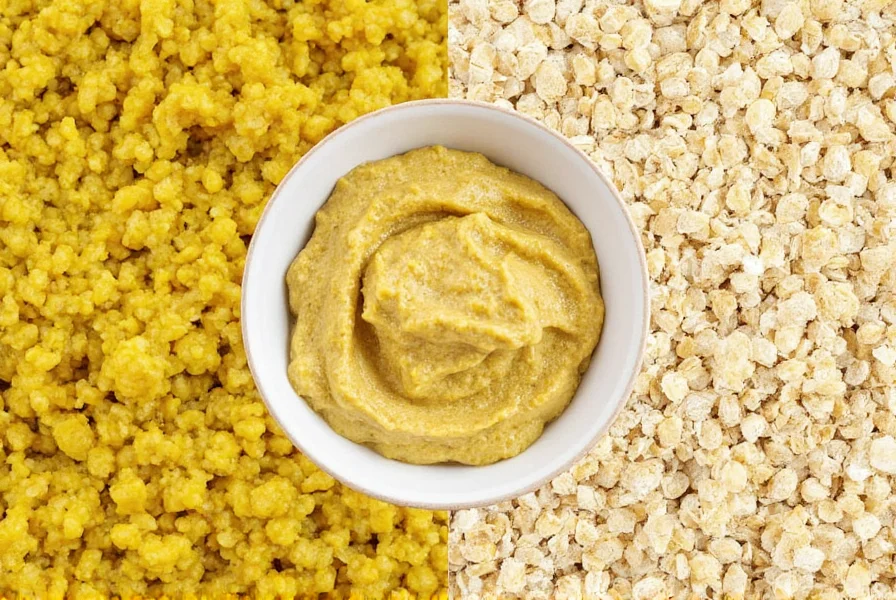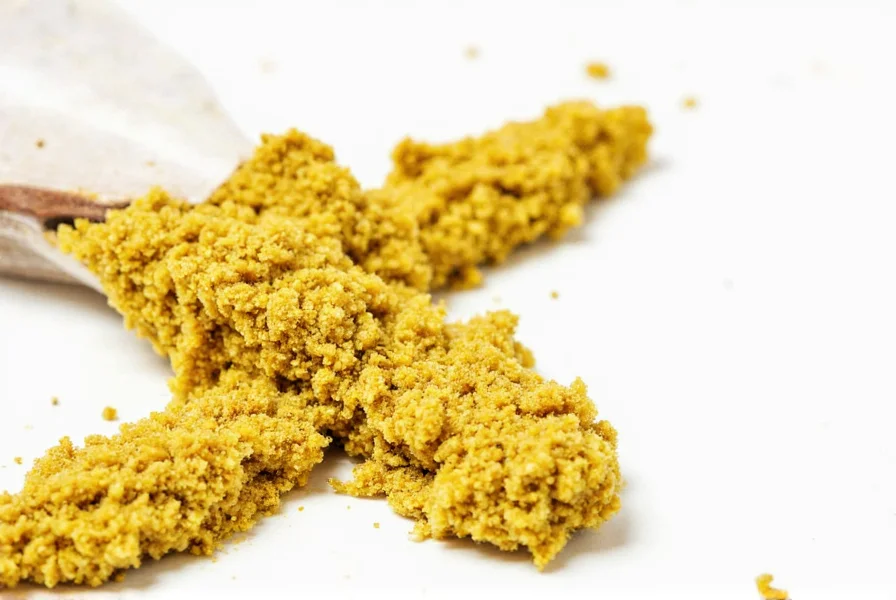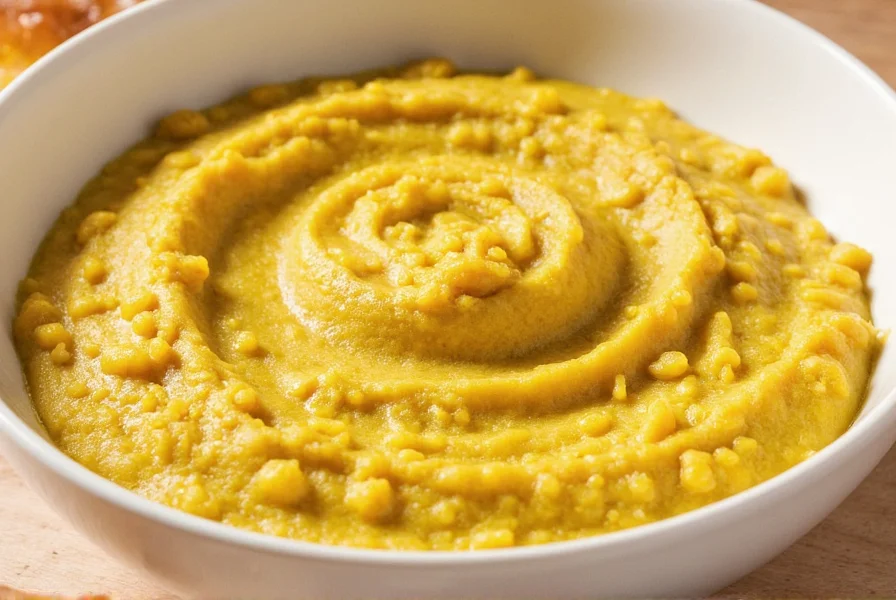Understanding Ground Mustard and Why Substitutions Are Needed
Ground mustard, also known as dry mustard, is made from finely ground mustard seeds. This pantry staple provides that distinctive tangy, slightly spicy flavor in everything from barbecue rubs to cheese sauces. Unlike prepared mustard, ground mustard contains no liquid, which is crucial when considering substitutions. When your recipe calls for ground mustard but you're out, understanding the role it plays helps you choose the right alternative.
Cooks often need substitutes for several practical reasons: running out mid-recipe, dietary restrictions (some prepared mustards contain allergens), or seeking a more intense mustard flavor than bottled versions provide. The key to successful substitution lies in matching both flavor profile and moisture content to maintain your recipe's intended texture and taste.
Top 5 Substitutes for Ground Mustard with Exact Ratios
Choosing the right substitute depends on what you have available and what you're cooking. Here's a detailed comparison of the most effective alternatives:
| Substitute | Ratio (per 1 tsp ground mustard) | Best For | Flavor Notes |
|---|---|---|---|
| Prepared yellow mustard | 1 tbsp | Marinades, dressings, meatloaf | Milder flavor, adds moisture |
| Mustard seeds (crushed) | 1½ tsp | Dry rubs, pickling, spice blends | Stronger, more complex flavor |
| Turmeric + vinegar | 1½ tsp turmeric + 1 tsp vinegar | Curries, cheese sauces, soups | Yellow color, less pungent |
| Wasabi powder | ¼ tsp | Asian-inspired dishes | Sharper heat, different flavor profile |
| Horseradish powder | ½ tsp | Beef dishes, cocktail sauces | Stronger heat, less tang |
Detailed Analysis of Each Substitute Option
Prepared Mustard: The Most Accessible Alternative
When you need a substitute for ground mustard in recipes and have prepared mustard available, this is your most convenient option. The 3:1 liquid-to-dry ratio accounts for the water content in prepared mustard. For every teaspoon of ground mustard called for, use one tablespoon of prepared yellow mustard.
This substitution works particularly well in wet applications like salad dressings, marinades, and sauces where the additional liquid won't affect texture. When using prepared mustard in dry applications like spice rubs, reduce other liquids in your recipe by 1 teaspoon per substitution to maintain consistency.

Mustard Seeds: The Whole Food Approach
Crushing mustard seeds provides the closest flavor match to ground mustard since it's essentially the same ingredient in a different form. Use 1½ teaspoons of freshly crushed yellow or brown mustard seeds to replace one teaspoon of ground mustard.
The advantage of this substitute for ground mustard in canning and pickling recipes is that you control the coarseness. For smooth sauces, grind seeds to a fine powder; for rustic applications like sauerkraut, a coarser grind adds texture. Mustard seeds contain myrosinase, the enzyme that creates that characteristic pungency when mixed with liquid, so let your crushed seed mixture sit for 10-15 minutes before using to develop full flavor.
Turmeric and Vinegar: The Pantry Staple Solution
When you need a substitute for ground mustard and have nothing mustard-related available, combine 1½ teaspoons of turmeric with 1 teaspoon of vinegar or lemon juice per teaspoon of ground mustard required. This pairing mimics both the color and tanginess of mustard.
This option works surprisingly well in cheese sauces, soups, and curries where the distinctive mustard flavor isn't the star but contributes to overall complexity. The turmeric provides the yellow hue while vinegar delivers the necessary acidity. For better flavor approximation, add a pinch of garlic powder and a dash of cayenne.
Recipe-Specific Substitution Guidance
Not all substitutes work equally well in every application. Consider these recommendations when choosing your ground mustard replacement:
- For canning and pickling: Mustard seeds are superior to other substitutes for ground mustard in canning applications because they maintain proper acidity levels and provide authentic flavor development during the preservation process.
- For cheese sauce and macaroni: Prepared mustard works best as a substitute for ground mustard in cheese recipes, using the 1 tablespoon per teaspoon ratio, as it melts smoothly without graininess.
- For dry rubs: Create a homemade ground mustard alternative by combining equal parts turmeric, paprika, and a pinch of cayenne to maintain dry texture while approximating flavor.
- For salad dressings: Dijon mustard makes an excellent substitute for ground mustard in vinaigrettes at a 2:1 ratio (2 teaspoons Dijon per teaspoon ground mustard) for more complex flavor.
Making Your Own Ground Mustard
If you frequently need a substitute for ground mustard, consider keeping mustard seeds on hand to make your own. Simply grind yellow or brown mustard seeds in a spice grinder until fine. For immediate use in recipes, mix 1 teaspoon of ground seeds with 1½ teaspoons of cold water and let sit for 10 minutes to activate the enzymes that create that signature heat.
For longer storage, combine ground mustard seeds with vinegar, salt, and a touch of sugar to create a paste that can be refrigerated for up to two weeks. This homemade version actually provides a fresher, more vibrant flavor than commercial ground mustard, which loses potency over time.

Storage Tips for Ground Mustard and Substitutes
Ground mustard retains potency for 1-2 years when stored in an airtight container away from light and moisture. Prepared mustard substitutes should be used within the same timeframe as your regular mustard. Crushed seed substitutes maintain freshness for about 6 months before losing their enzymatic activity.
When storing your homemade ground mustard alternative made from seeds, keep it in a glass jar with a tight lid in a cool, dark place. The addition of a desiccant packet can extend shelf life by absorbing moisture that would otherwise activate the seeds prematurely.
Frequently Asked Questions
Can I use regular mustard instead of ground mustard in baking?
Yes, but adjust liquid content. Use 1 tablespoon prepared mustard per teaspoon ground mustard called for, and reduce other liquids by 1 teaspoon per substitution. This maintains proper dough or batter consistency while providing similar flavor.
What's the difference between ground mustard and dry mustard?
Ground mustard and dry mustard are the same product - finely ground mustard seeds with no added liquid. The terms are used interchangeably in recipes. Both differ from prepared mustard, which contains vinegar, water, and other ingredients.
Will substituting mustard affect canning safety?
Using mustard seeds as a substitute for ground mustard in canning is safe and maintains proper acidity. Avoid liquid substitutes like prepared mustard in canning recipes, as they alter the pH balance critical for food safety in home preservation.
How do I adjust recipes when substituting for strong-flavored ground mustard?
For recipes using brown or spicy ground mustard, increase your substitute by 25%. When using prepared mustard as a substitute for ground mustard in spicy recipes, choose a horseradish or spicy brown variety rather than yellow mustard for better flavor matching.
Can I make a gluten-free substitute for ground mustard?
All natural mustard substitutes are inherently gluten-free. Mustard seeds, prepared mustard (check labels as some brands add wheat), turmeric, and vinegar are all gluten-free. This makes finding a suitable substitute for ground mustard straightforward for gluten-sensitive diets.











 浙公网安备
33010002000092号
浙公网安备
33010002000092号 浙B2-20120091-4
浙B2-20120091-4